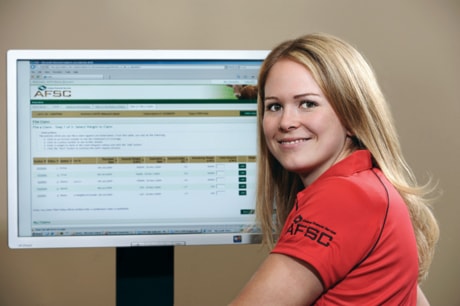Alberta’s beleaguered cattle producers have gained a small measure of support with the launch this week of the Alberta Cattle Price Insurance Program (CPIP).
Announced last December by Alberta Agriculture and Rural Development, the program enables producers to ensure a minimum price for their fed cattle. They can buy insurance for protection against futures price risk, currency exchange risk and basis risk (the difference between the local cash market and futures contract prices), or they can choose basis-only insurance.
“It gives Alberta cattle producers a minimum price for fed cattle, so they know in advance the minimum they’ll receive once those animals reach market weight,” said Jennifer Wood, CPIP co-ordinator with Agriculture Financial Services Corp., the provincial Crown corporation administering the program.
Premiums and coverage levels are calculated and sold each Tuesday, Wednesday and Thursday afternoon. Producers can monitor this information and purchase coverage online.
CPIP premiums are producer-funded and based on a forecast of where Alberta fed cattle prices will be when the policy expires, said Wood. Live cattle futures prices, currency exchange rates and a forecast of the Canada-U.S. basis are used
Producers can choose policies from 12 to 36 weeks in length, with the duration matching the time it will take for their cattle to reach market weight, said Wood.
In recent years, Alberta cattle producers have been hurt by the global economic downturn, an oversupply of red meat due to the H1N1 outbreak, mandatory country of origin labelling (COOL) requirements in the U.S. and exchange rate changes.
Many existing risk management tools are based on U.S. futures markets and reflect American cattle prices. So when Canadian cattle prices drop relative to American prices, as happened in the case of BSE and COOL, Alberta producers can be left exposed, said Wood.
“The last seven years have taught us that we don’t know what kind of risk might be coming tomorrow,” said Tom Lesher, who finishes about 4,500 cattle near Lacombe each year. “It’s too volatile to be out in the market place with no protection.”
He said CPIP is a good program to cover basis risk.
The Alberta Beef Producers sponsored the initial research into a cattle insurance program about five years ago. The Alberta Feeder Associations, Alberta Agriculture and Rural Development, and AFSC became involved later.
Wood said a similar insurance product for feeder cattle could be introduced next year.
Producers wishing to participate in CPIP can obtain a user name and password for online access from an AFSC office. Additional information about the program can be found on the AFSC website at www.afsc.ca.
